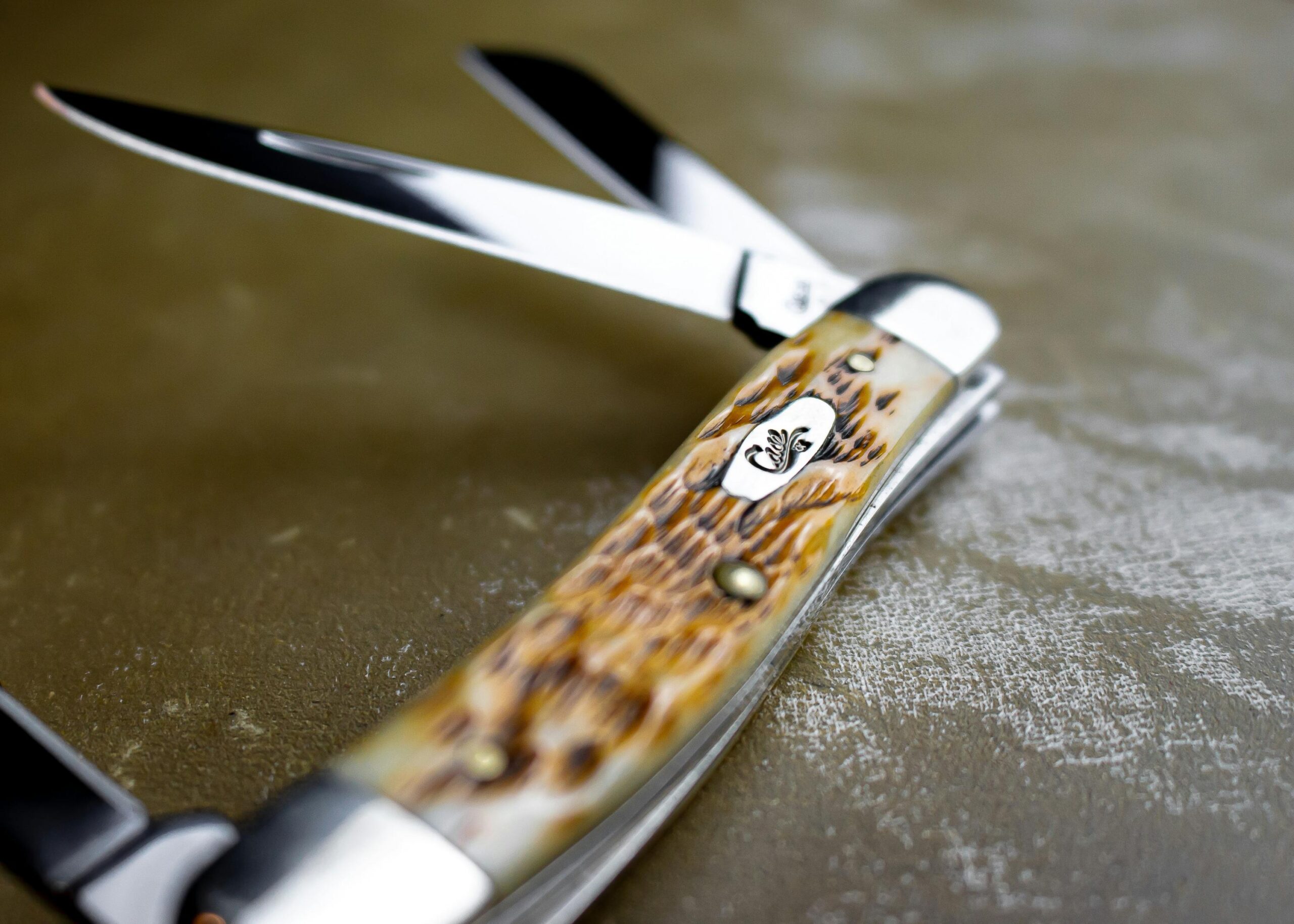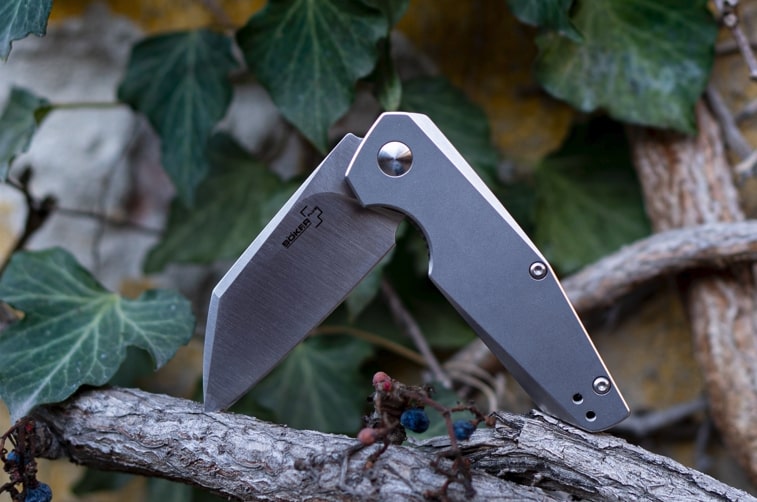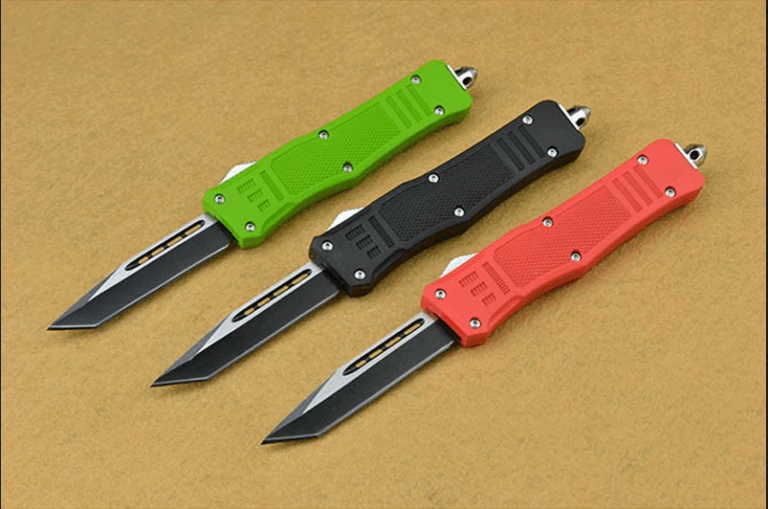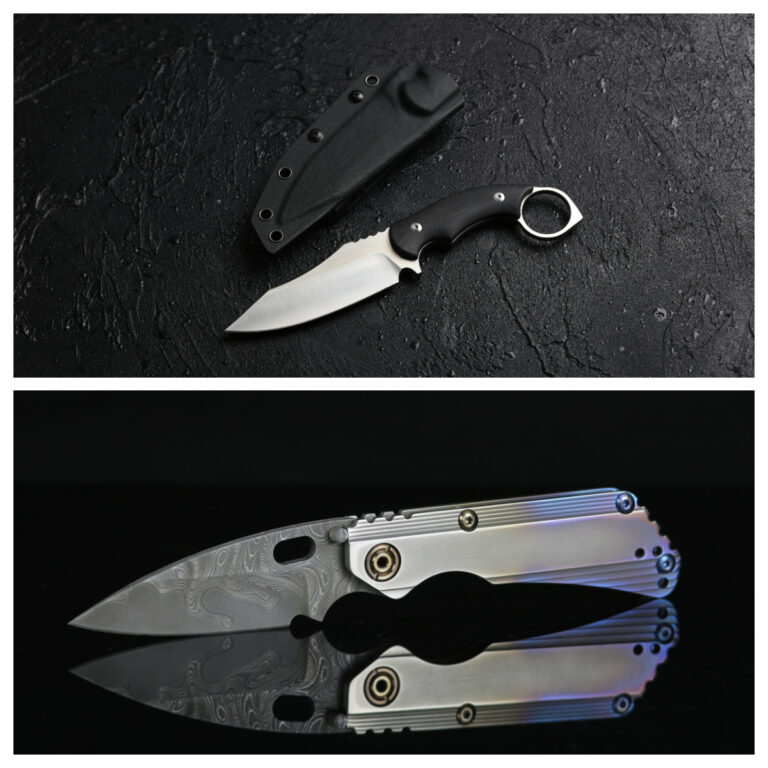A spey blade features a straight edge and a rounded tip designed to reduce accidents during tricky tasks like animal care. This unique shape has made it popular in the world of pocket knives, especially among those handling livestock or looking for safe utility blades.
If you sell knives or stock pocket knives, it’s important to know the differences between blade shapes. With this guide, you’ll discover how the spey blade compares to other common designs and what roles it fills best for your customers.
Selling the right blade shape—like the spey—can help your buyers choose the safest and most effective tools for their needs. Learn more about this distinct blade type, its uses, and how to match it with the right buyer.
Key Features of Spey Blade
A spey blade stands out among knife blades due to its unique design, practical tip, and clear origin tied to livestock work. Sellers benefit from knowing each detail as buyers look for both form and function.
Tip
The tip on a spey blade is rounded and blunt, which offers clear advantages. You can use the blade safely for slicing tasks that require precision without worrying about piercing or puncturing by mistake. This feature is key for anyone seeking a blade that protects the user and the workpiece.
Unlike drop point or clip point knife blades, the spey blade tip is not sharp or pointed. The intentionally dull end helps avoid accidents, making it popular for jobs near sensitive materials. Users in ranching or food prep often rely on this for both efficiency and safety.
Shape
The shape of a spey blade is marked by a straight edge that runs parallel to the spine, then curves abruptly upwards at the tip. The spine remains mostly flat until it meets the short, rounded segment. This layout creates a sweeping edge ideal for smooth, controlled cuts and less risk of “snagging” at the tip. Such a design is common on multi-blade pocket knives, like the stockman and trapper styles. Unlike a sheepsfoot blade, the spey has a slight belly near the tip for added utility. The blade typically measures anywhere from 2.5 to 4 inches on popular knife models, giving you a balance of reach and control.
Functional Origins
The spey blade was originally designed for farmers, ranchers, and especially those working with livestock. Its main purpose was to help safely neuter or “spey” animals—a job needing clean cuts without accidental piercing. The dull tip allowed handlers to work quickly, protecting both animal and user. Today, its origins still influence its broad usage. The blade is favored for tasks that demand non-piercing action, like skinning, slicing, or even spreading food. Sellers should note its history boosts trust among buyers looking for traditional, reliable knife blades with proven safety and practical use.
What Is a Spey Blade Used For?
Livestock and Ranch Work (Core for Stockman Knives)
The spey blade was first made for ranch and farm work, especially for castrating livestock like cattle and pigs. Its blunt, rounded tip lowers the chances of puncturing skin or organs, which is key for animal safety. Many stockman pocket knives have a spey blade for this reason.
Veterinarians and ranchers often choose this blade because it keeps both the user and animal safe during tough or quick jobs. Thousands of calves may be castrated using only a spey blade in some operations, as the safer tip helps control the depth and direction of cuts. The blade’s design also makes it easy to clean, which helps keep the knife in good condition over many uses.
Hunting and Trapping (Vital for Trapper Knives)
Hunters and trappers use the spey blade mainly for skinning game. The wide, curved belly allows clean, smooth strokes, helping you avoid tearing meat or snagging fur. At the same time, the dull tip makes it hard to puncture hides or organs, keeping pelts and meat unspoiled.
Many trapper knives include a spey blade for this exact reason, making it a top choice for field dressing. This blade can handle small and medium game. While it’s not as sharp at the tip as drop point or clip point blades, it still offers enough control for fine cuts when you need them.
General Utility
A spey blade gives you more than just specialty use. It’s a handy tool for daily cutting tasks because the risk of accidental jabs is much lower. Many pocket knives and survival knives have a spey blade for jobs like opening packages, cutting strings, or even spreading food.
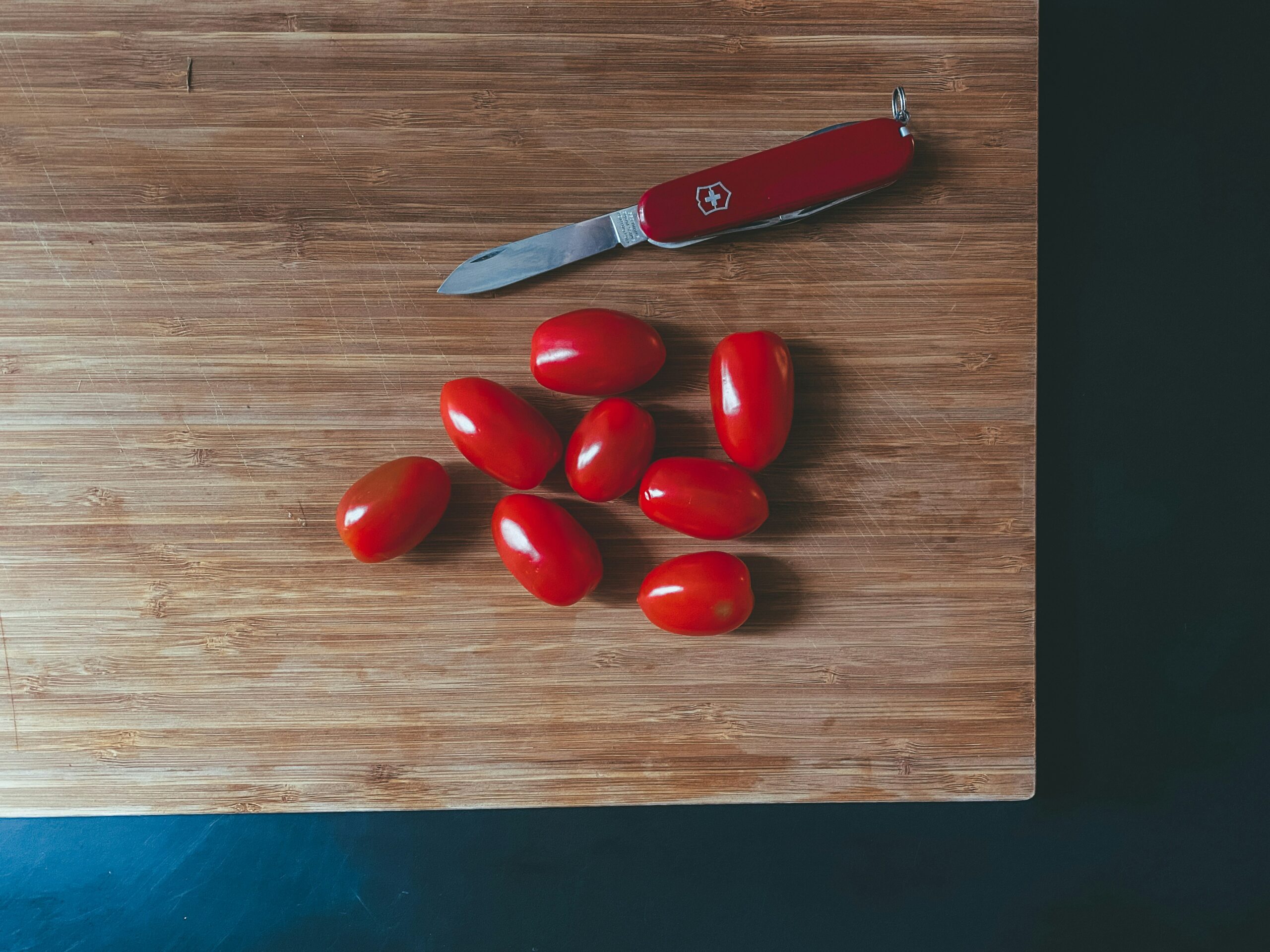
Because the edge is straight and the tip is safe, young users or those less experienced with knives can use a spey blade with more confidence. Some people even use it in the kitchen for slicing cheese, fruit, or for light food prep when outdoors. This makes it versatile, whether you’re on the ranch, in the field, or at home.
Spey Blade vs Clip Point Blade
Choosing between spey blades and clip point blades depends on the tip’s shape, the main edge style, and how much work it takes to sharpen each one. These differences affect how you market, use, and maintain the knives for your customers.
Tip
The tip is the biggest visual and functional difference between a spey blade and a clip point blade.
A spey blade features a rounded, blunt tip. This makes it safer for tasks that need cutting without accidental piercing, like skinning or agricultural work. The point of a spey blade rises gently near the end of the blade, keeping it safer for users because it’s less likely to puncture.
In contrast, a clip point blade has a sharper, more defined tip. The spine of the blade is “clipped” away near the tip, creating a thinner, sharper end. This design gives you excellent control for making detailed cuts or piercing tasks. Knives like the famous Bowie knife use the clip point blade shape because the tip is so effective for slicing, stabbing, and other fine tasks.
If your customers want a knife for safe, general work, recommend a spey blade. If they need precise control and sharp point work, guide them to a clip blade.
Shape
The main body of a spey blade sits almost flat along the spine and the cutting edge.
Close to the tip, the edge curves up smoothly, while the spine comes straight out before sloping down. This creates an almost pentagon-shaped profile with a blunt end, making it practical for sweeping cuts and minimal accidental nicks. The shape works best for skinning, food prep, or farm tasks where you don’t want to puncture delicate material.
A clip point, on the other hand, has a curved cutting edge that meets a spine with a dramatic “clip” segment. This section is sometimes straight or slightly concave, running from the tip backward toward the handle. This feature concentrates the blade’s edge into a sharper, needle-like point, giving you more usable length for slicing and detailed work. It’s a top choice in both outdoor utility and tactical knives, as shown on many iconic blades on the market.
Use this key shape difference to help buyers select a knife that fits their main cutting needs.
Spey blades tend to have a thicker profile near the tip, making sharpening a bit more challenging. The blunt end is less likely to chip, but it can take longer to reach a truly sharp edge. When using a sharpening stone, you need to keep the angle steady as you move past the gentle curve to the tip. This takes practice and patience for consistent sharpness. Some users notice spey blades do not get as razor-sharp as clips but hold a safe, working edge well.
Clip point blades, however, are easier and quicker to sharpen because of their flat, thin design near the tip. The clip section can be maintained with ease and grabs a keen edge with less effort. Many users find clip points reach shaving-sharp status quickly because of the tip geometry and lighter material at the end. This is an advantage if your customers prefer easy maintenance and repeated sharpening between jobs.
Highlight these sharpening facts for buyers who want low upkeep or quick resharpening between uses.
Conclusion
The spey blade stands out for its safety and versatility. Its rounded tip helps prevent accidental punctures, making it a trusted tool among farmers and ranchers for animal care. This feature makes it helpful in daily knife tasks where control and precision are priorities.
Many sellers find the spey blade popular in multitools and traditional pocket knives. Its practical shape makes it useful for skinning and processing, as well as common chores like opening packages and simple food prep.
You can leverage these features to appeal to buyers looking for reliable and safe tools for outdoor, farm, or everyday tasks.If you want to offer spey blades in your own product line, now is a great time to explore sourcing options. You can request a free quote if you need help with wholesale, OEM, or private label services—especially if your business is in Europe or America and wants to partner with an expert Chinese knife manufacturer.
Frequently Asked Questions
How does a Sheepsfoot blade differ from a Spey Blade in terms of design and usage?
A sheepsfoot blade has a straight cutting edge and a flat spine that curves down to meet the edge at the tip. This design gives more control during slicing and helps avoid accidental punctures.
In contrast, a spey blade features a straight edge and a rounded tip, making it safer for procedures like animal castration and skinning. The lack of a sharp point reduces the risk of piercing soft tissue, especially in veterinary or farming work. You can learn more about the design and uses of spey blades online.
You’ll find the sheepsfoot blade is popular for carving, whittling, and safe push cuts. The spey blade, however, is often included on knives meant for working with livestock because of its safety-focused tip.
Can you compare the Spey Blade and Clip Blade for everyday carry purposes?
The clip blade has a thin, curved tip that is great for detail work, piercing, and slicing. Many users prefer the clip blade for everyday carry because it can handle a wide range of cutting tasks.
A spey blade, on the other hand, offers safety because its rounded tip makes puncturing unlikely. Spey blades are useful for slicing, skinning, and any jobs where a pointed tip is not needed. For those needing a utility blade for safer cuts, the spey blade is a solid choice.
On many pocketknives, you might see users picking the clip blade for fine work and the spey blade when they want to avoid accidents or need a straight, steady cut.
In what ways are Clip and Spey Blades used together on multi-blade pocketknives?
Many classic pocketknives, like trapper and stockman models, include both clip and spey blades. The clip blade handles piercing and precise cutting tasks while the spey blade is reserved for safer or more controlled slicing.
Together, these blades make a pocketknife much more versatile. You can handle everything from opening packages to farm chores without switching tools. This dual setup is why multi-blade knives remain popular with ranchers, outdoorsmen, and anyone valuing reliable versatility in cutting tools.
